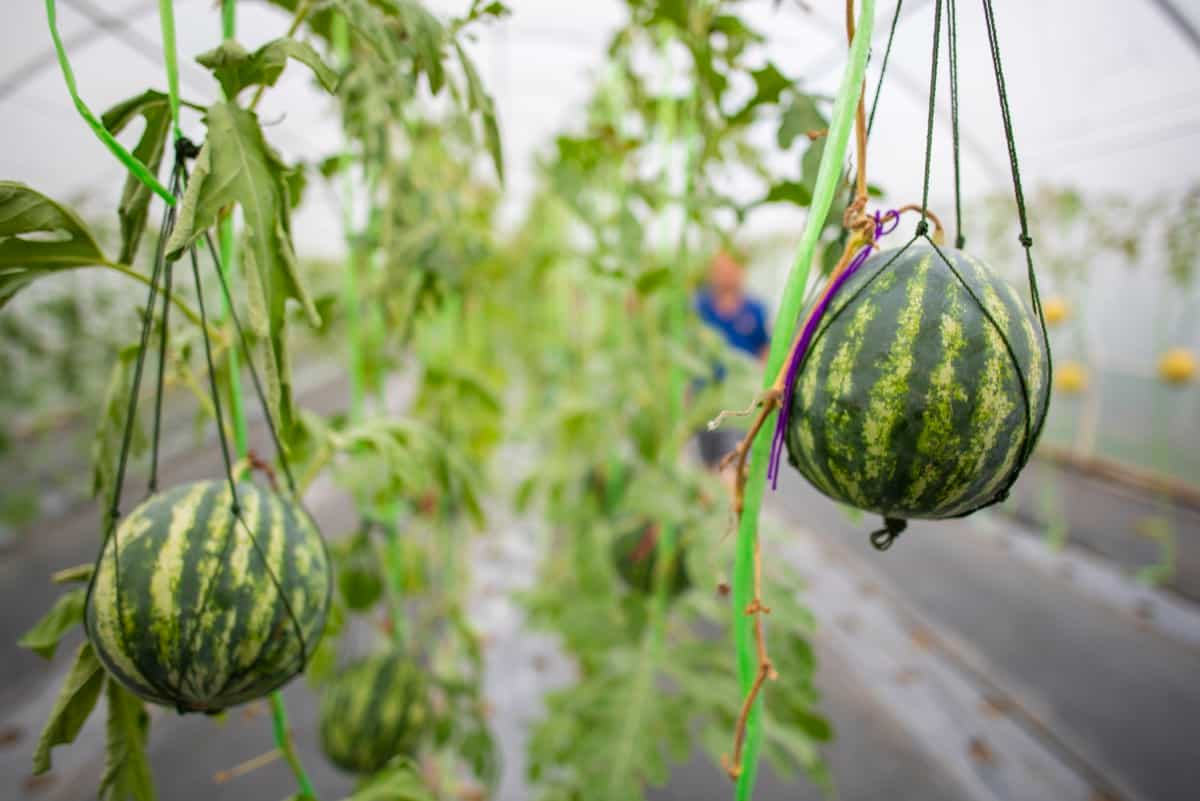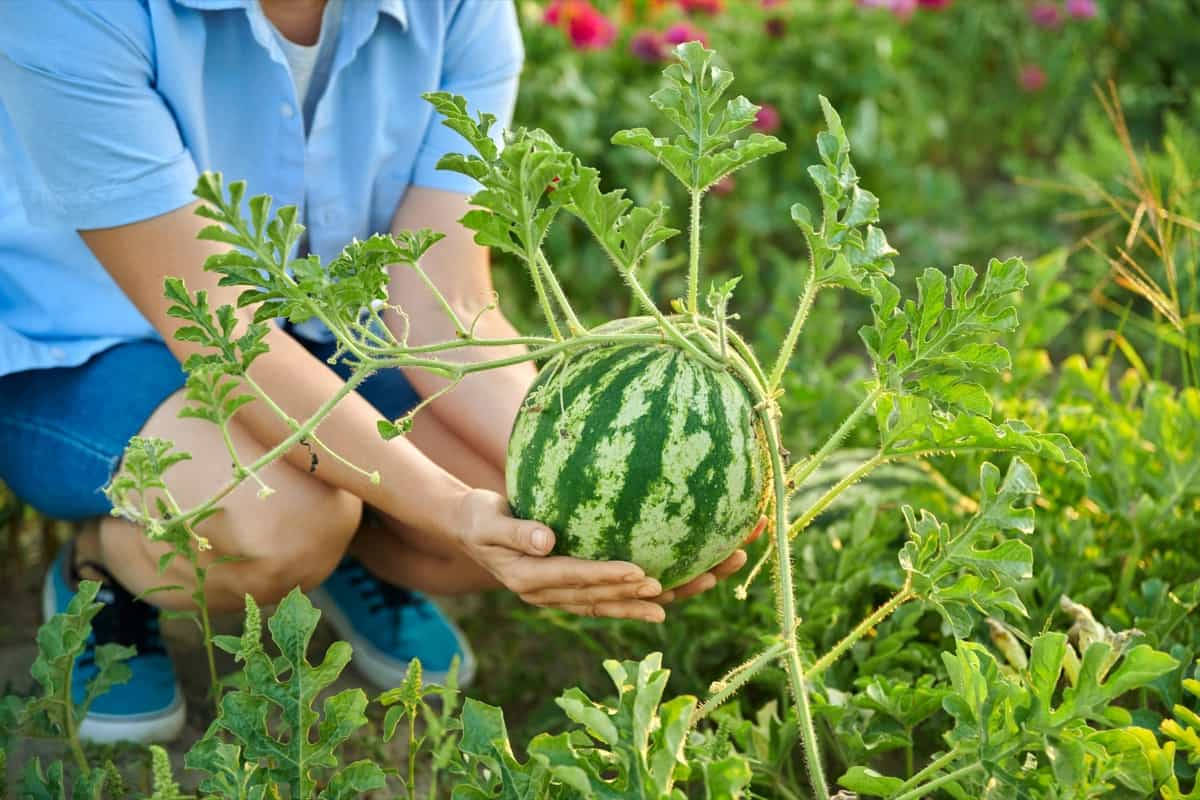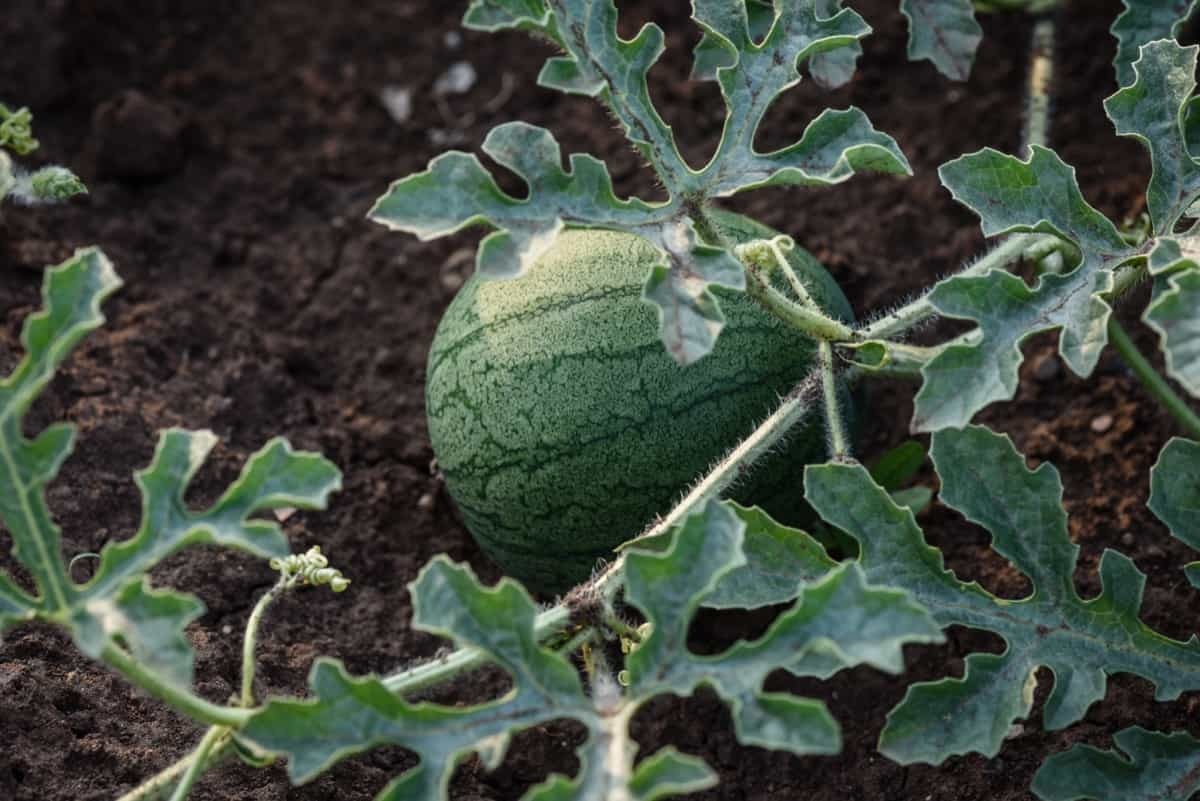Watermelon cultivation is an art that requires careful attention to detail, and one crucial aspect of this process is fertilization. Fertilization plays a key role in ensuring the healthy growth and development of Watermelon plants. By providing essential nutrients, Proper Watermelon Growth Fertilizer Plan, fertilizers help optimize plant health, increase fruit quality, and maximize yield.

Overview of Nutrient Requirements for Watermelons
Watermelon plants require a balanced supply of essential macronutrients, nitrogen, phosphorus, and potassium. Nitrogen promotes lush foliage growth, while phosphorus aids in root development and overall plant health. Potassium contributes to fruit quality and helps regulate water uptake. In addition to these primary macronutrients, Watermelons also benefit from secondary nutrients.
Watermelon Fertilizer Schedule
Soil Preparation and Testing
Assessing Soil Nutrient Levels
To ensure healthy growth, it is crucial to assess the nutrient levels in the soil before planting Watermelons. Soil testing is a valuable tool for assessing nutrient levels. By analyzing samples from different areas of the field, farmers can determine if any specific nutrients are deficient or imbalanced.
Amending Soil Prior to Planting
When it comes to Watermelon Soil Fertility, Amending the soil is the best step in ensuring optimal nutrient availability and overall plant health. The first thing you need to do is assess the quality of your soil. Conduct a soil test to determine its nutrient content. Based on the soil test, you can then decide what amendments are needed. Common amendments include compost, aged manure, peat moss, and sand. These organic materials improve soil structure, fertility, drainage, and moisture retention.
Starter Fertilizer Application
Choosing the Right Starter Fertilizer
Choosing the right starter fertilizer is crucial for successful Watermelon cultivation. This initial application sets the stage for healthy plant growth and development. When selecting a starter fertilizer, it’s important to consider the nutrient content and formulation. Ideally, a starter fertilizer should have a higher concentration of phosphorus (P) compared to nitrogen (N) and potassium (K). Phosphorus helps in root development, and young Watermelon plants need to establish themselves in the soil.
Application Techniques and Timing
When it comes to Watermelon Fertilization Techniques, timing plays a key role in ensuring healthy growth and abundant fruit production. To begin with, it’s important to note that Watermelon plants have different nutrient needs at various stages of growth. During the early stages, when seedlings are just starting to establish themselves, a starter fertilizer rich in phosphorus can provide a boost for root development.
This should be applied at planting time by placing small amounts directly into the planting hole or mixing it into the soil around each plant. As the plants continue to grow, regular applications of nitrogen become essential for optimal development. Nitrogen is responsible for promoting leafy growth and overall plant vigor. It’s recommended to divide nitrogen applications into multiple doses rather than applying them all at once.
In case you missed it: How to Increase Watermelon Fruit Size: Management for Getting Bigger Watermelons

In addition to nitrogen, Watermelon plants also require adequate levels of phosphorus and potassium for healthy fruit development. Phosphorus aids in flower formation, while potassium contributes to overall plant strength and disease resistance. Applying these nutrients during flowering and fruiting stages is crucial for maximizing yield potential.
Nitrogen Management
Importance of Nitrogen for Watermelon Growth
In the early stages of growth, nitrogen is important for promoting vigorous vegetative growth. Adequate nitrogen levels help Watermelon plants establish a strong root system and develop healthy leaves that can efficiently photosynthesize and provide energy for fruit production.
Nitrogen Application Schedule
Early in the growing season, when your Watermelon plants are still establishing themselves, a small amount of nitrogen can be beneficial. This helps promote vigorous root growth and sets the stage for future development. As the plants enter their vegetative phase and start producing leaves, you can increase the nitrogen application rate slightly.
During flowering and fruit set stages, however, it’s best to reduce the amount of nitrogen applied. Too much nitrogen during this time can cause extra vine growth at the expense of fruit development. Instead, focus on phosphorus and potassium applications to support flowering and fruiting.
Phosphorus and Potassium Requirements
Role of Phosphorus and Potassium in Watermelon Health
Phosphorus is responsible for promoting strong root development, which is vital for nutrient uptake and plant stability. It transfers energy within the plant, aiding in photosynthesis and fruit development. Potassium, on the other hand, helps regulate water balance within the plant cells and enhances disease resistance. It strengthens cell walls, making plants more resilient to environmental stressors such as drought or pests. Potassium also improves fruit quality by enhancing sugar content and flavor.
Recommendations for Phosphorus and Potassium Application
For phosphorus, it is generally recommended to apply it before planting or during transplanting. This nutrient promotes root development and overall plant growth. Incorporating phosphorus-rich fertilizer into the soil prior to planting will ensure that your Watermelon plants have access to this vital nutrient from the very beginning.
Potassium, on the other hand, is responsible for improving fruit quality and disease resistance. It also helps regulate water uptake by plants. Splitting applications into multiple doses can be beneficial as well, especially during periods of rapid fruit development.
Micronutrients and Trace Elements
Identifying Micronutrient Needs
Micronutrients may be small in quantity, but they play a crucial role in the growth and development of Watermelons. These essential elements include iron, manganese, zinc, copper, boron, molybdenum, and chlorine. Identifying micronutrient deficiencies is not always straightforward, as symptoms may change depending on the specific nutrient involved. However, there are some common signs to look out for. For example, yellowing between leaf veins may indicate an iron deficiency, while white or yellow spots on leaves could point to a zinc deficiency.
Application Methods for Micronutrients
When it comes to Fertilizer Application for Watermelons, one effective method of applying micronutrients is through foliar sprays. By spraying a fine mist directly onto the leaves, these nutrients can be absorbed quickly and efficiently by the plant’s foliage. This method is especially useful when there are signs of nutrient deficiency or when soil conditions may hinder nutrient uptake.
Another way to provide micronutrients to Watermelon plants is through fertigation – combining fertilization with irrigation. By injecting liquid fertilizer containing the necessary micronutrients into the irrigation system, growers can ensure that these vital elements reach the roots directly.
Fertilization During Flowering and Fruit Set
Adjusting Fertilizer Types and Amounts
During the early stages of growth, Watermelons benefit from a higher nitrogen content in their fertilizer. This helps promote healthy leaf development and overall plant vigor. As the plants start flowering and fruiting, NPK Ratios for Watermelons are less nitrogen and more phosphorus (P) and potassium (K). These nutrients play crucial roles in flower formation, fruit development, and overall plant health. You can switch to a fertilizer with a lower nitrogen value but higher phosphorus and potassium values during this time.
In case you missed it: The Ultimate Guide to the Top 16 Best Watermelon Varieties

Timing of Applications to Maximize Fruit Quality
When it comes to Fertilization Timing for Watermelons, During the early growth stage, it is important to focus on nitrogen application. Nitrogen promotes vegetative growth and helps establish a strong foundation for the plant. However, excessive nitrogen during this stage can result in lush foliage but fewer fruits.
As the plants transition into the flowering stage, phosphorus and potassium become more essential. Phosphorus aids in flower development and root growth, while potassium increases overall plant health and disease resistance. To determine when these nutrients should be applied, closely monitor your crop’s development. As a general guideline, consider applying phosphorus and potassium before flowering begins or as indicated by soil test results.
Irrigation and Fertilizer Interactions
Watering Techniques for Optimal Fertilizer Uptake
Watering your Watermelon plants is not just about quenching their thirst. To achieve optimal fertilizer uptake, it’s important to water your Watermelons deeply and evenly. Shallow watering can lead to nutrients being washed away before they reach the root zone, while uneven watering can result in uneven nutrient distribution within the soil.
Managing Fertilization in Different Irrigation Systems
Watermelon plants have specific nutrient needs that must be met at different stages of growth. In traditional irrigation systems such as overhead sprinklers or furrow irrigation, it’s important to consider the potential for nutrient leaching. These systems can cause nutrients to be washed away from the root zone, making them less available to the plant.
To mitigate this issue, applying fertilizers in smaller doses more frequently can help ensure a steady supply of nutrients throughout the growing season. Alternatively, if you’re using drip irrigation or a subsurface drip system, there is less risk of nutrient leaching. This allows for longer intervals between fertilizer applications but requires careful monitoring of soil moisture levels and regular testing for nutrient deficiencies.
Organic Fertilization Options
Types of Organic Fertilizers Suitable for Watermelons
One popular organic fertilizer for Watermelons is compost. Compost is made from food scraps, yard waste, and manure. It not only provides essential nutrients like nitrogen, phosphorus, and potassium but also improves soil structure and promotes beneficial microbial activity. Another organic fertilizer option is fish emulsion. Fish emulsion is particularly effective during the early stages of Watermelon growth when plants need a boost of nutrients to establish strong roots.
Integrating Organic and Inorganic Fertilization Methods
Integrating organic and inorganic fertilization methods can be a game-changer for your Watermelon crops. Organic fertilizers provide slow-release nutrients that nourish plants over time. They are derived from natural sources like compost, manure, or bone meal. These materials improve soil structure and enhance microbial activity. On the other hand, inorganic fertilizers contain concentrated forms of nutrients that are easily available to plants. They are typically manufactured using chemical processes and can deliver quick results when applied correctly.
Monitoring and Adjusting Fertilization
Techniques for Monitoring Plant Health and Soil Nutrients
One effective method is visual observation. Look out for yellowing leaves, stunted growth, or wilting, as these may indicate nutrient imbalances or other issues. Another technique is conducting soil tests. These tests provide valuable information about the nutrient content of your soil, helping you determine if any amendments are needed.
Adjusting Fertilization Based on Growth Stages
One crucial aspect of Watermelon cultivation is adjusting fertilization based on the different growth stages of the plants. As Watermelons progress from seedlings to mature fruit-bearing plants, their nutrient requirements change. During the early stages of growth, like germination and seedling development, it is important to provide fertilizer with a higher ratio of phosphorus and potassium. These nutrients promote strong root development, healthy foliage growth, and overall plant vigor.
As the Watermelon vines start to vine out and produce flowers, nitrogen becomes more critical. Nitrogen supports vigorous vegetative growth which in turn allows for more efficient energy production during flowering and fruit set. Once fruits have formed on the vines, it’s time to shift focus toward providing adequate potassium for proper fruit development. Potassium helps regulate water movement within cells, which contributes to firmness and sweetness in the final product.
In case you missed it: Best and Worst Companion Plants for Watermelon

Conclusion
Fertilization plays a vital role in the successful cultivation of Watermelons. By understanding the nutrient requirements of Watermelon plants and assessing soil nutrient levels, farmers can make informed decisions about amending the soil and choosing the right fertilizers. By following a well-planned Watermelon fertilizer schedule based on growth stages, Watermelon growers can optimize their crop yields and produce high-quality fruits that satisfy market demands.
- How to Grow Hibiscus from Flower
- Plantation Ideas for Home Decoration: A Beginners Guide
- Flower Garden Designs and Layouts for Beginners
- Planting and Spacing Techniques in Papaya: A Beginner’s Guide
- Growing Gold: Essential Techniques for Planting Pineapples
- How to Make Kalanchoe Plant Bushy: Home Remedies and Solutions
- 11 Reasons Why Your Gardenia is Not Blooming: Home Remedies and Solutions
- Eco Elegance: The Guide to Designing a Drought-Tolerant Landscape
- Gardening on a Slope: Strategies for Hillside Landscaping